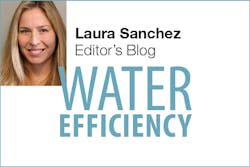We generally consider public-private partnerships (P3s) a logical way for the US to repair and replace its aging infrastructure. On occasion, we may even reference Lincoln’s railroads, Eisenhower’s highways, or Kennedy’s space program while extolling the virtues of the private investment for infrastructure renewal. But are these deals always the best solution? And are they accomplishing what they claim to? We ask this with an open mind.
The Trump administration has identified P3s as a key component of its infrastructure initiative. And the projects figure prominently in its 2018 budget. We thought it would be interesting to observe one project—currently in review as a P3 candidate—in an effort to answer these questions.
The Columbia River is the fourth largest river by volume in North America and home to the country’s largest network of energy-producing dams. “Nearly half of the nation’s hydropower electricity comes from more than 250 hydro-power dams that were built on the Columbia and its tributaries,” Kirk Johnson recently reported for the New York Times.
Today, the infrastructural assets from each dam, including the transmission network of energy distribution wires and substations, are owned by the Bonneville Power Administration, a federal agency in charge of distributing the hydro-generated power to private energy buyers. Those buyers—which include Google, Amazon, and Microsoft—benefit from some of the cheapest, most environmentally friendly electricity in the nation.
The Trump administration has proposed to redesign the system as a partial P3 in an effort to reduce costs to taxpayers and improve operational efficiency. It’s a shift that would involve the sale of distribution network assets to for-profit organizations. As logic follows, revenues would support equipment renewal, new technology, and long-term maintenance. But, some argue that the struggle to derive profits from a traditionally non-profit system would most likely result in higher power prices.
Structurally, the P3 plan would keep the electricity production in government control but relinquish its hold on power delivery. And that, experts explain, is where things get especially complicated. Partial privatization would require a series of new contracts outlining the responsibilities of both public and private partners. With 250 hydropower sources, and increasing penetrations of wind and solar, the details are multifarious, with distribution networks spread across multiple states. One dam alone, the Grand Coulee, sends power to ten different states.
Others have expressed concern that privatization would transform a government service that ensures equal standards across numerous cities and states into a private operation without a sense of overall accountability. Furthermore, the protections—those promised to Native American tribes who lost land with the construction of the dams—may disappear as court decisions and treaties lose their value. Those obligations, tribal leaders explain, are bound by a federal relationship.
However, discontent over the Bonneville Power Administration’s performance has risen sharply in recent years. Some of this dissatisfaction is fueled by the organization’s perceived resistance to wind power, an increasingly common revenue source for residents of the Pacific Northwest. Recent curtailments, during which Bonneville power managers shut off wind power due to the amount of water flowing through the dams, have reduced revenue to dependent communities.
“Better procurement methods, market discipline, and a long-term focus on maintaining assets” are means by which the current administration believes that the private sector can support infrastructure. It goes on to state in an outline of the Infrastructure Initiative that “While public-private partnerships will not be the solution to all infrastructure needs, they can help advance the nation’s most important, regionally significant projects.”
What are your thoughts? Do you think that P3s are the best solution for America’s aging infrastructure?
[poll id=”4″]
We look forward to discussing a variety of topics related to infrastructure and public-private partnerships at the StormCon conference in Bellevue, WA, August 27 – 31st. To learn more about it, visit www.StormCon.com.
